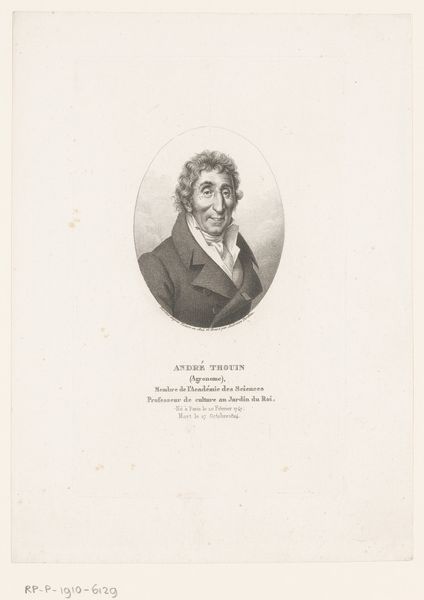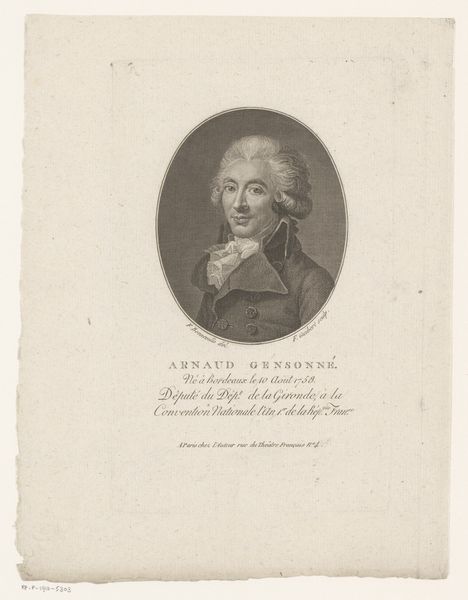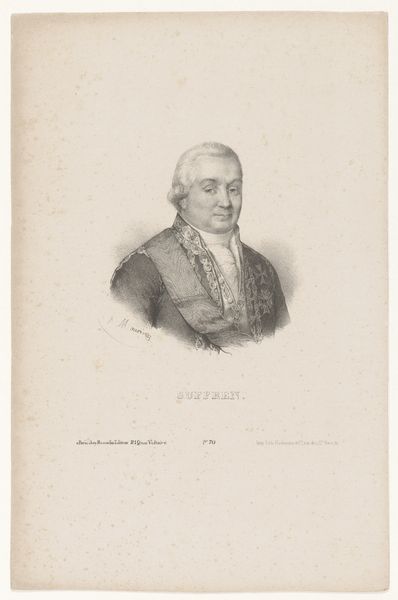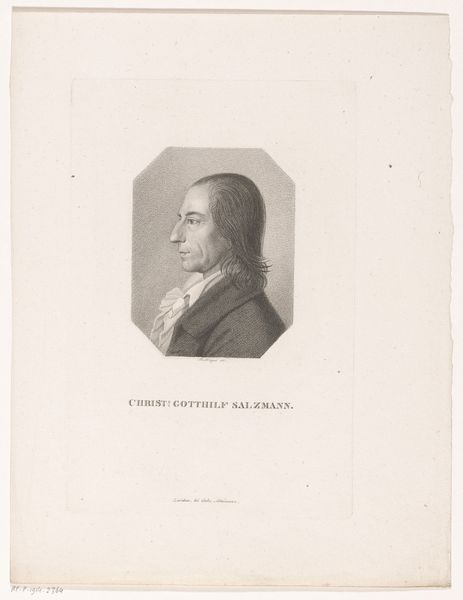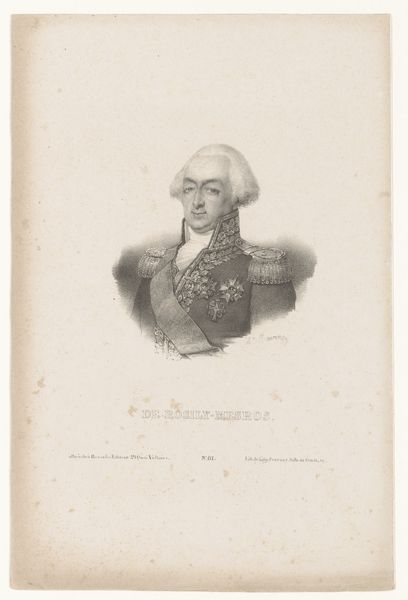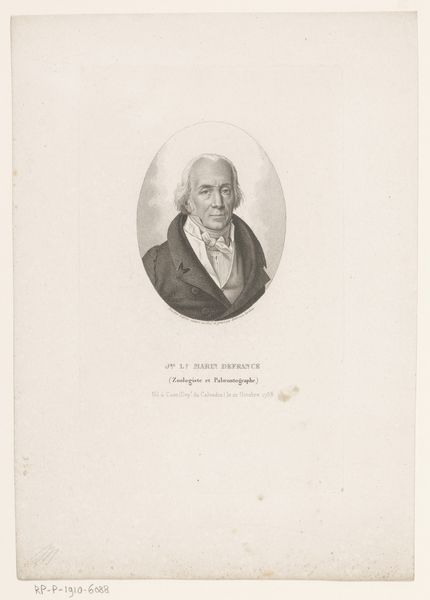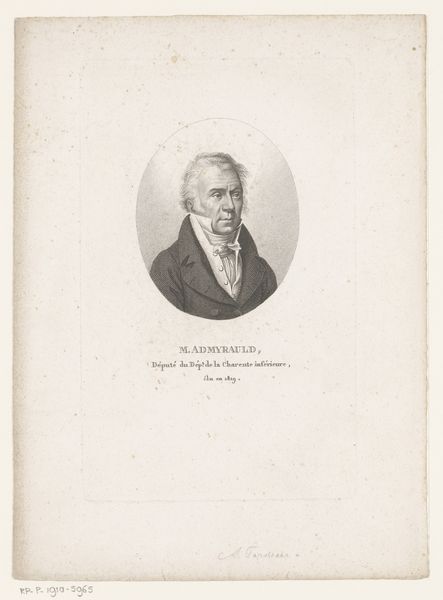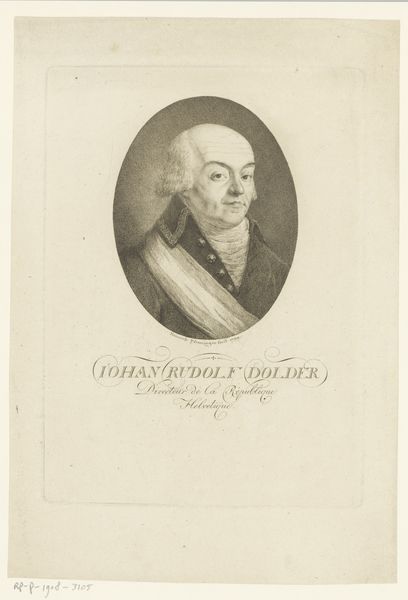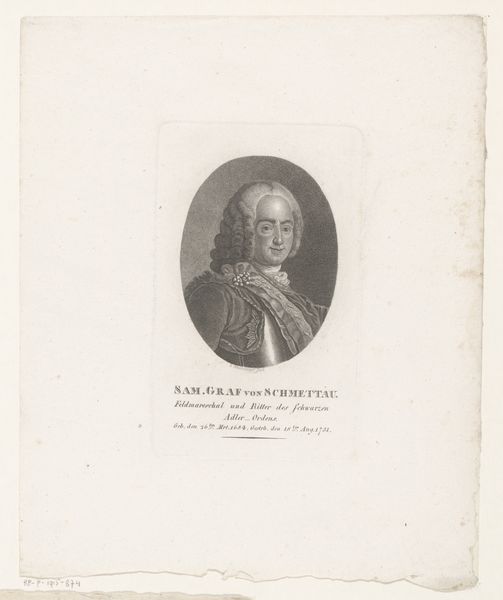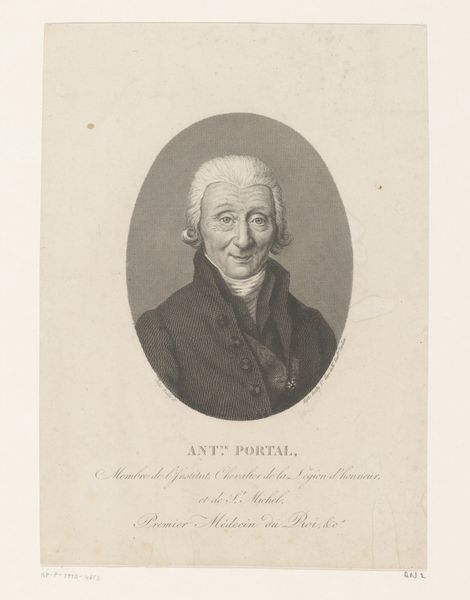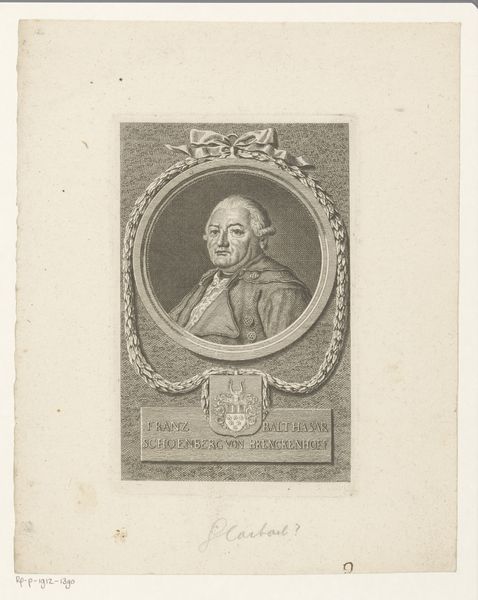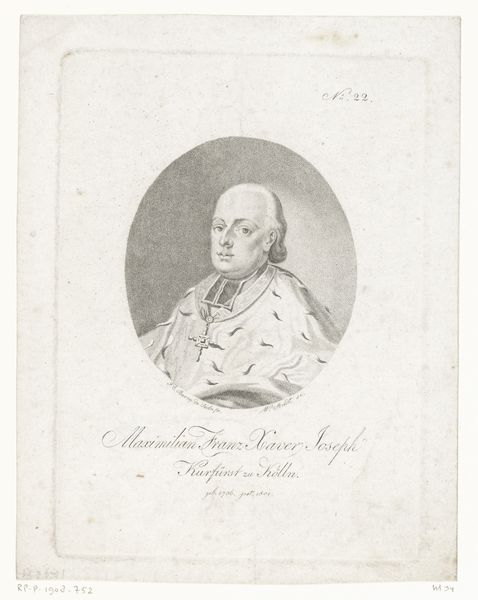
print, engraving
#
portrait
#
neoclacissism
# print
#
history-painting
#
engraving
Dimensions: height 225 mm, width 146 mm
Copyright: Rijks Museum: Open Domain
This print of André-Joseph Abrial, a Count of the French Empire, was likely made during his lifetime, using a technique called stipple engraving. This process involves creating an image from tiny dots, rather than lines, which gives the portrait a soft, almost photographic quality. Stipple engraving was often used for portraits because it allowed for subtle gradations of tone, capturing the texture of skin and fabric. The engraver would have used a tool called a "roulette," to create the tiny pits on the copper plate. Ink would then be applied to the plate, and wiped away from the surface, leaving ink only in the stippled areas. The print is made by pressing paper against the inked plate. Consider the labor involved in creating such a print. Each dot represents a deliberate act, building up the image bit by bit. In a world increasingly dominated by industrial production, techniques like stipple engraving represent a pre-industrial mode of image-making, rooted in the skill and patience of the artisan. Recognizing the labor and skill involved invites us to value the art object as a product of human ingenuity.
Comments
No comments
Be the first to comment and join the conversation on the ultimate creative platform.
